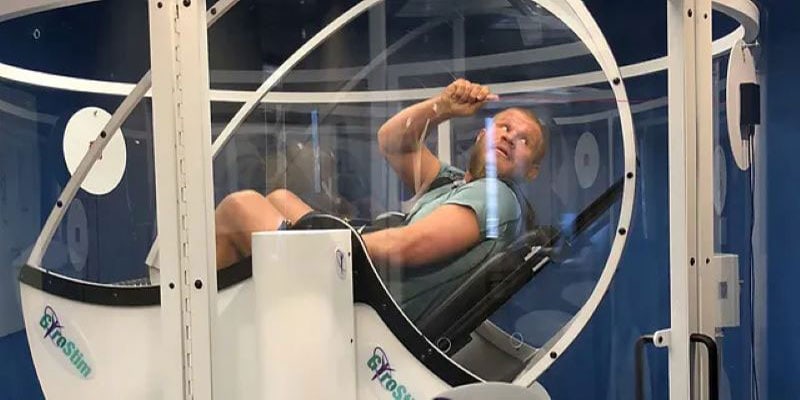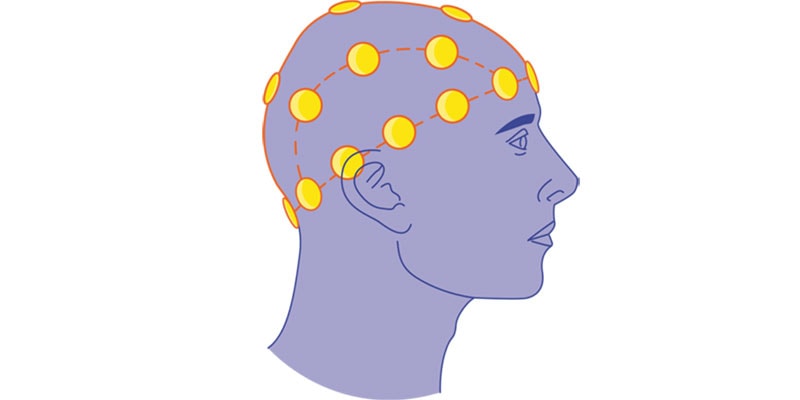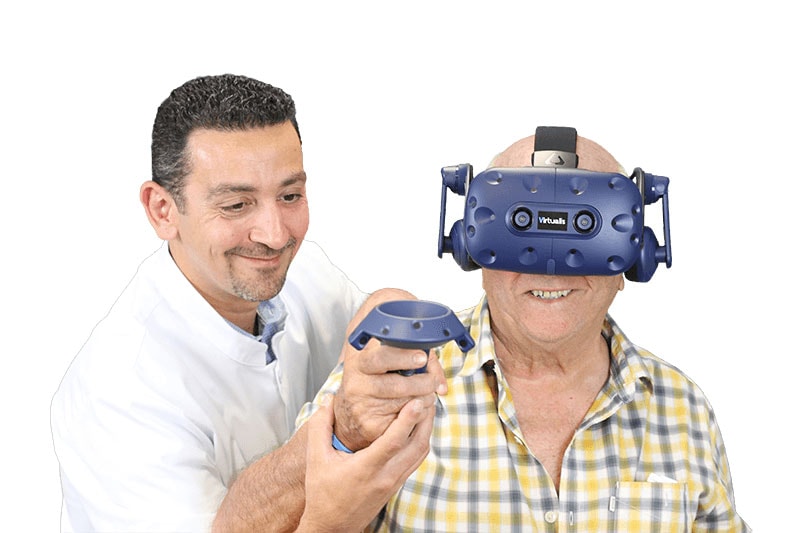A recent development in vestibular rehabilitation therapy includes a new device called The GyroStim. Vestibular rehabilitation is a type of therapy that aims to address problems related to the vestibular system, which is responsible for maintaining balance and spatial orientation. The GyroStim plays a part in this form of treatment by providing controlled, multi-axis rotation to stimulate and challenge the vestibular system.
The device consists of a chair or seat that can rotate in various directions and at different speeds. Patients sit in the chair while it undergoes controlled movements, allowing for a customizable and systematic approach to vestibular rehabilitation. The movements provided by the GyroStim can help to improve the function of the vestibular system, which can be beneficial for individuals who have experienced a variety of vestibular disorders or injuries.
The GyroStim is often used by healthcare professionals, such as physical therapists, occupational therapists, and neurologists, to treat a range of conditions, including but not limited to:
- Vestibular Disorders: These can include conditions such as benign paroxysmal positional vertigo (BPPV), labyrinthitis, and vestibular neuritis.
- Traumatic Brain Injuries: The GyroStim may be used as part of a comprehensive rehabilitation program for individuals who have experienced traumatic brain injuries, which can affect the vestibular system.
- Balance Disorders: Patients with balance problems stemming from various causes can benefit from the controlled stimulation and exercises provided by the GyroStim.
The therapy sessions involving the GyroStim are typically customized to the individual’s specific needs and may include a combination of different movements and exercises. The goal is to help the patient adapt to and improve their tolerance for motion and spatial orientation, thereby enhancing their overall balance and stability.
It’s important to note that while the GyroStim can be a valuable tool in vestibular rehabilitation, it is typically used as part of a comprehensive treatment plan that may include other therapeutic modalities, exercises, and lifestyle modifications to achieve the best possible outcomes for patients with vestibular disorders or balance issues. As with any medical treatment, it is essential that the use of the GyroStim is overseen by a qualified healthcare professional.
Enhanced Neuroplasticity
GyroStim therapy promotes neuroplasticity, the brain’s ability to reorganize and form new neural connections. By stimulating the vestibular system through controlled rotations, the GyroStim encourages the brain to adapt and compensate for any existing deficits. This process aids in the restoration of balance, spatial orientation, and overall sensory integration. Through repeated sessions, patients can experience improved neurosensory processing, leading to better coordination and stability.
Comprehensive Rehabilitation for Diverse Condition
The GyroStim’s versatility allows it to address a wide range of conditions beyond vestibular disorders. Patients recovering from traumatic brain injuries often encounter balance and spatial awareness challenges. GyroStim therapy, when incorporated into their rehabilitation program, can expedite the recovery process by providing targeted vestibular stimulation and coordination exercises. Moreover, individuals with balance impairments resulting from aging, neurological conditions, or musculoskeletal issues can benefit from the GyroStim’s comprehensive approach to enhancing stability and motor coordination.
Holistic Approach to Vestibular Health
GyroStim therapy is often integrated into a holistic approach to vestibular health and wellness. In conjunction with the use of the GyroStim, healthcare professionals may incorporate additional techniques such as visual tracking exercises, proprioceptive training, and cognitive rehabilitation to optimize outcomes. This multidisciplinary approach ensures that patients receive a well-rounded treatment plan that addresses various aspects of their vestibular function, leading to a more comprehensive and effective recovery process.
In conclusion, GyroStim therapy serves as a valuable and versatile tool in the realm of vestibular rehabilitation. Its ability to provide tailored treatment regimens, enhance neuroplasticity, cater to diverse conditions, promote a holistic approach to vestibular health, and contribute to ongoing research signifies its pivotal role in improving patients’ balance, coordination, and overall well-being. As the field of vestibular rehabilitation continues to progress, the GyroStim remains at the forefront of innovative therapies aimed at enhancing the quality of life for individuals with vestibular disorders and balance impairments.


